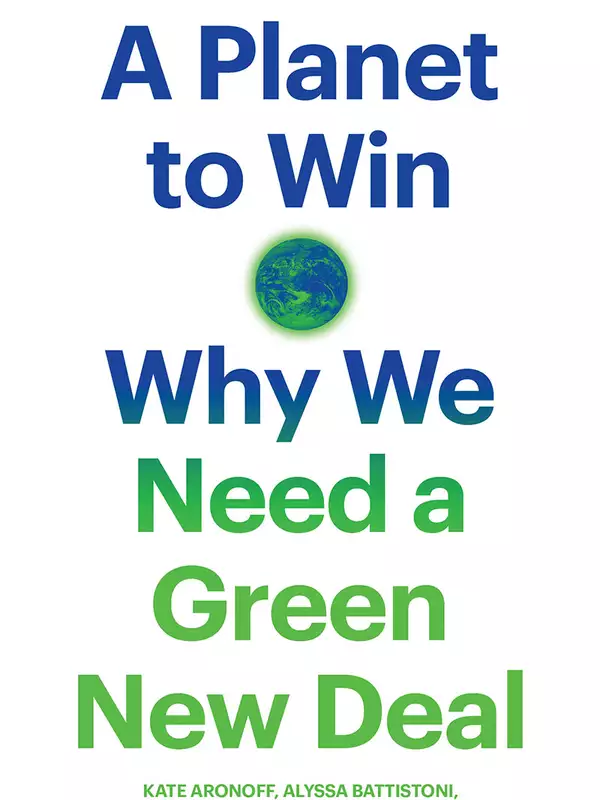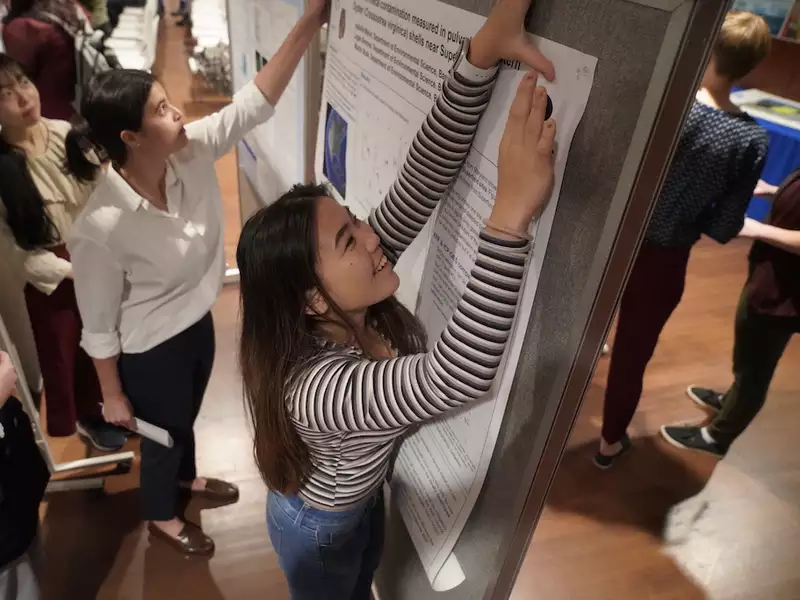The passage of the Inflation Reduction Act of 2022 (IRA) marked the largest federal investment — nearly $370 billion — in equitable environmental action and the clean energy transition. For some, the bill’s signing into law was a historic step taken to combat climate change. For Alyssa Battistoni, assistant professor of political science, the landmark legislation on its own “is not nearly good enough.”
“[The IRA] doesn’t have much in the way of direct public investment,” said Battistoni. “Instead, it is much more targeted at incentivizing consumer purchases of green tech via tax credits and catalyzing private sector investments.”
Battistoni’s co-authored 2019 book, A Planet to Win: Why We Need a Green New Deal, examined the social and political aspects of climate change and proposed a democratic approach to decarbonization. In her recent article in Dissent magazine, Battistoni skillfully tracked the path of climate politics from the 2019 Green New Deal (GND) and the Build Back Better framework of 2021 (BBB) to the latest IRA, as she considers what’s next in a critical moment for the governance of environmental action.
Battistoni will teach The Politics of Nature this fall, offering students the opportunity to examine the roles of economics, morality, and science in nature. She will guide students to navigate the central challenge at the crux of global politics today: a warming planet.
In this Break this Down interview, Battistoni maps how climate change exists in even the most simple features of daily living by drawing a reciprocal relationship between the planet and its infrastructure policies. In the face of widespread eco-despair and regularly cataclysmic weather, she offers a critical reminder — climate change is a collective problem that will require collective solutions.
Can you explain what environmental politics are and how they frame our understanding of climate action, inaction, or defiance?
Environmental politics are often thought of as separate from other political issues, as [being] just about recycling, saving the rainforest, or the polar bears. But in fact, all politics are environmental politics. Where we live, how we get around, what kinds of work we do, what we eat — all of these things affect the state of the planet we live on. That means that the politics of housing, labor, transit, land use, agriculture, migration, and many other things are connected to climate change, even if those connections don’t seem immediately obvious.
So, it’s good that climate change is finally being integrated into infrastructure policy and other kinds of political decisions. We often think about climate action in terms of dramatic events — like pipeline blockades, school strikes, or giant marches — and those are extremely important, but climate action also happens in struggles over affordable housing in dense cities, funding for subways and buses, and efforts to improve working conditions in growing green industries.
All politics are environmental politics.
In your Dissent article, you write that the IRA is “a long way from the vision of the Green New Deal” of 2019. Is there a way to bridge the gap between the GND and the IRA?
The Green New Deal is a comprehensive vision of climate action. It recognizes a robust role for the state in climate action in the form of public investments, industrial policy, and provision of public goods and services in order to decarbonize rapidly and in ways that tackle other social and economic inequalities. It identifies the connections between climate change and other social issues, calling for major public investments in social housing, public transportation, and good green jobs.
[President Joe] Biden’s approach to climate policy was definitely influenced by the GND. In the early days of his administration, Biden proposed significant public investment in green infrastructure, as he targeted job creation and the prioritizing of investments in “frontline” communities via the Build Back Better program. This was still much smaller than some other proposals on the table — like Bernie Sanders’ $16 trillion climate plan [proposal] or the THRIVE Act — but it was a promising sign. But of course, passing legislation is challenging, and the IRA ended up being a much smaller and less ambitious package of spending.
Despite its serious limitations, however, the IRA has the potential to spur a lot of investment in new green tech industries, opening up a new landscape of possibilities. For example, schools, local governments, and NGOs are eligible for tax credits, so it’s important for institutions serving the public to make use of [these credits].
How do the environmental policymakers calculate and distribute reparations to meet the scale of the climate crisis?
Climate reparations are, in many ways, incalculable. Under the worst-case scenarios, billions of people will be threatened by food and water scarcity, flooding, heat waves, and extreme weather, to name just a few effects. There’s no real way of repairing that damage, but wealthy countries that are historically responsible for carbon emissions clearly bear a moral responsibility to do as much as possible to both reduce their own emissions rapidly and help other vulnerable countries adapt.
Right now, however, the conversation about reparations isn’t even at the stage of calculating and distributing. A call for the loss and damage fund is the closest thing there is to an actually existing reparations program. It would provide resources to developing countries affected by climate impacts to rebuild after a disaster. At the most recent United Nations climate change conference, COP27, an agreement was reached to undertake such a program, but the details have not yet been worked out.
In the meantime, wealthy countries have not met the commitments they’ve already made. For example, in 2009, developed countries committed to mobilizing $100 billion annually by 2020, but have come nowhere close to doing so. Other, more ambitious programs are on the horizon: The 2022 Bridgetown Agenda, for example, pushes for major financial reforms and new sources of climate finance. Some activists have calculated the “climate debt” that countries with high emissions levels owe to countries that have emitted very little, but so far, rich countries have not acknowledged that debt.
How do you advise Barnard students as they consider the tension between climate change, infrastructure, and the drivers of environmental politics?
Climate change can seem totally overwhelming and often makes people feel hopeless, which is why [it is] important to present a positive vision of a possible future and outline a pragmatic strategy for getting there. The fact that climate change is connected to so many other issues can be daunting, but it also means that there’s a lot of opportunity to build a diverse and comprehensive climate movement.
Students can find ways of connecting their existing passions and projects to climate issues. I try to emphasize that we will all be dealing with climate change for the rest of our lives, so we can’t ever decide it’s too late or give up. We have to keep figuring out what to do. That can feel very heavy, but I think it can also be motivating because it’s a reminder that what we do always matters.






